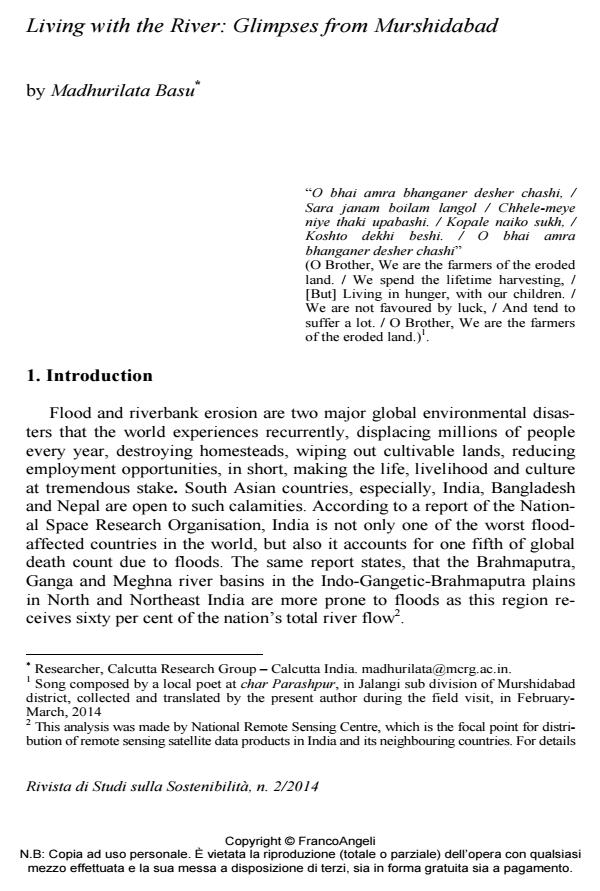Living with the River: Glimpses from Murshidabad
Journal title RIVISTA DI STUDI SULLA SOSTENIBILITA'
Author/s Madhurilata Basu
Publishing Year 2014 Issue 2014/2
Language English Pages 20 P. 105-124 File size 207 KB
DOI 10.3280/RISS2014-002007
DOI is like a bar code for intellectual property: to have more infomation
click here
Below, you can see the article first page
If you want to buy this article in PDF format, you can do it, following the instructions to buy download credits

FrancoAngeli is member of Publishers International Linking Association, Inc (PILA), a not-for-profit association which run the CrossRef service enabling links to and from online scholarly content.
In a district affected by poverty, flood, riverbank erosion, the life of people in the ‘borderlands’, in Murshidabad, is a story of everyday struggle and endless negotiations. Being a border district, Murshidabad, is under constant supervision of the security personnel. But the process of ‘othering’ becomes complete when one reaches river chars or charlands that also coincide with the Indo-Bangladesh border. Whims of the river, affecting the life and livelihood of the people, clubbed with various sorts of restrictions on movements, indifference of the local administration, difficulties in accessing various kinds of amenities like hospitals, schools or food items at subsidized rates, make them near-citizens. This paper explores the realities in two charlands in Jalangi- char Parashpur and char Bhadra.
Keywords: Floods, riverbank erosion, chars/charlands, borders, food security, trafficking
Madhurilata Basu, Living with the River: Glimpses from Murshidabad in "RIVISTA DI STUDI SULLA SOSTENIBILITA'" 2/2014, pp 105-124, DOI: 10.3280/RISS2014-002007